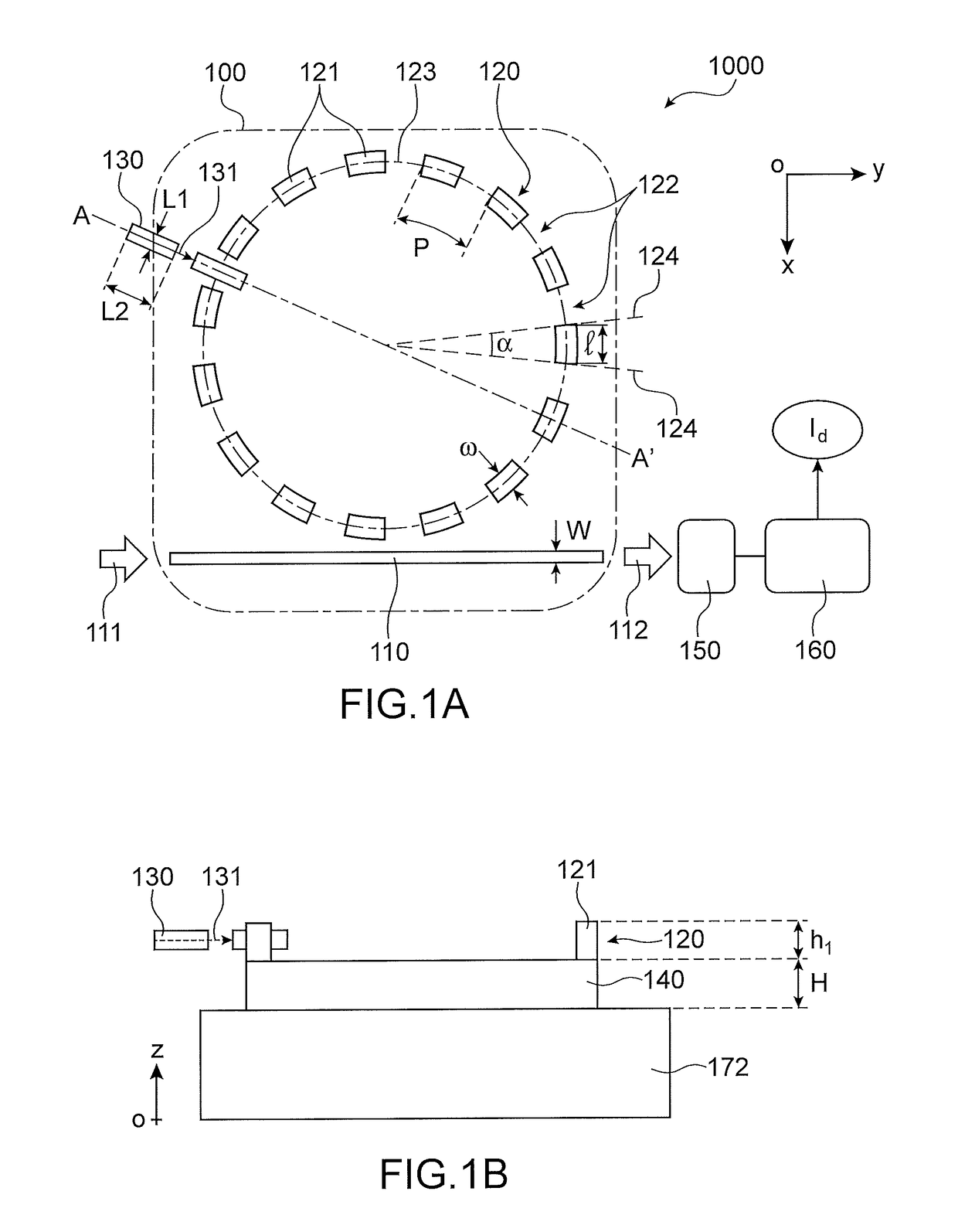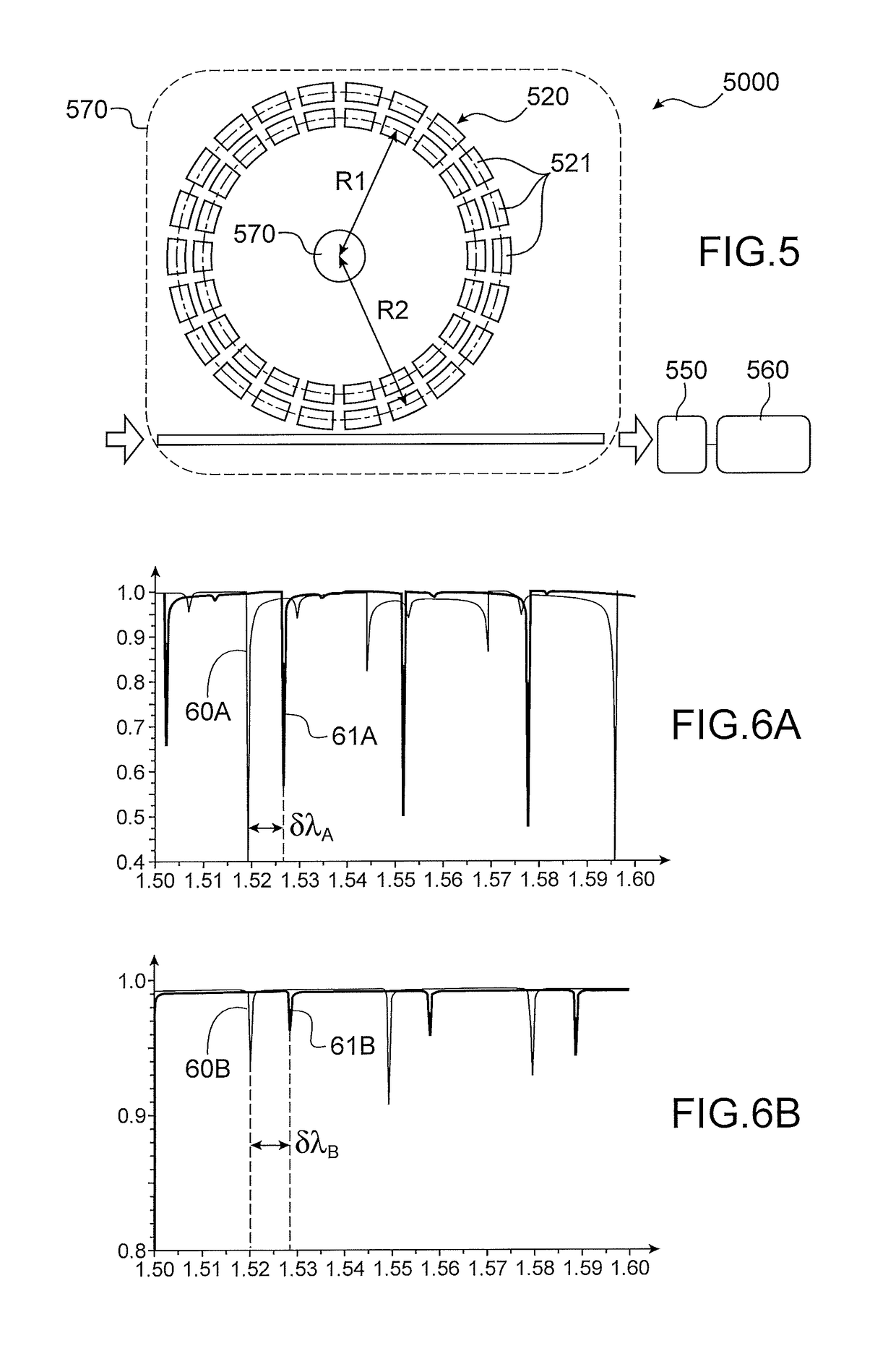Displacement sensor with segmented ring microresonator
a microresonator and displacement sensor technology, applied in the field of waveguide microresonators, can solve the problems of limiting the sensitivity of the sensor, affecting the effect of the nanobeam on the resonance wavelength, and undergoing optical losses in the analysis beam transiting in the microresonator
- Summary
- Abstract
- Description
- Claims
- Application Information
AI Technical Summary
Benefits of technology
Problems solved by technology
Method used
Image
Examples
first embodiment
[0044]FIGS. 1A and 1B illustrate in a schematic manner an optical sensor according to the invention, respectively in a top view and in a sectional view;
[0045]FIG. 2 illustrates transmission spectra obtained by means of the sensor of FIGS. 1A and 1B;
[0046]FIG. 3 illustrates in a schematic manner a first alternative of the embodiment of FIGS. 1A and 1B;
[0047]FIG. 4 illustrates in a schematic manner a second alternative of the embodiment of FIGS. 1A and 1B;
second embodiment
[0048]FIG. 5 illustrates in a schematic manner an optical sensor according to the invention;
[0049]FIGS. 6A and 6B illustrate a comparison of the transmission spectrum variation obtained by means of a sensor according to the prior art, and by means of a sensor according to the invention;
[0050]FIGS. 7A and 7B illustrate in a schematic manner a first alternative of suspended layout of the microresonator according to the invention;
[0051]FIGS. 8A and 8B illustrate in a schematic manner a second alternative of suspended layout of the microresonator according to the invention;
third embodiment
[0052]FIGS. 9A to 9D illustrate different alternatives of the microresonator of an optical sensor according to the invention;
[0053]FIGS. 10A and 10B illustrate two alternatives of a coupling zone of an injection and extraction waveguide according to the invention; and
[0054]FIG. 11 illustrates in a schematic manner a method for manufacturing an optical device according to the invention.
PUM
 Login to View More
Login to View More Abstract
Description
Claims
Application Information
 Login to View More
Login to View More - R&D
- Intellectual Property
- Life Sciences
- Materials
- Tech Scout
- Unparalleled Data Quality
- Higher Quality Content
- 60% Fewer Hallucinations
Browse by: Latest US Patents, China's latest patents, Technical Efficacy Thesaurus, Application Domain, Technology Topic, Popular Technical Reports.
© 2025 PatSnap. All rights reserved.Legal|Privacy policy|Modern Slavery Act Transparency Statement|Sitemap|About US| Contact US: help@patsnap.com



